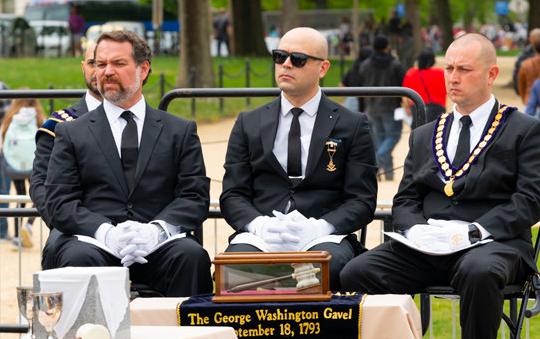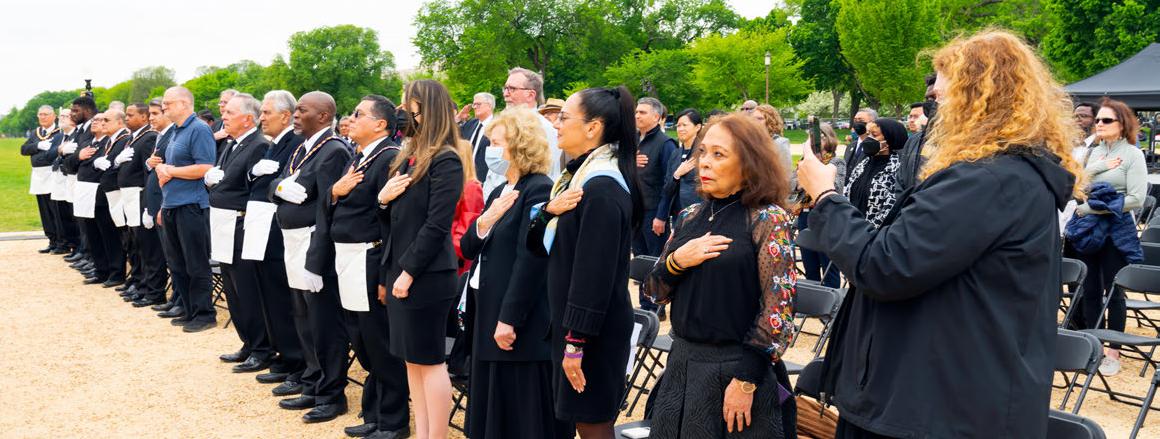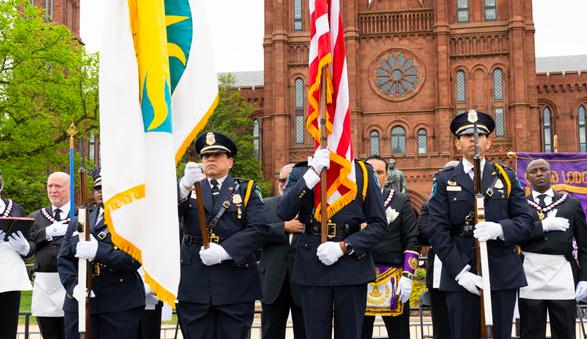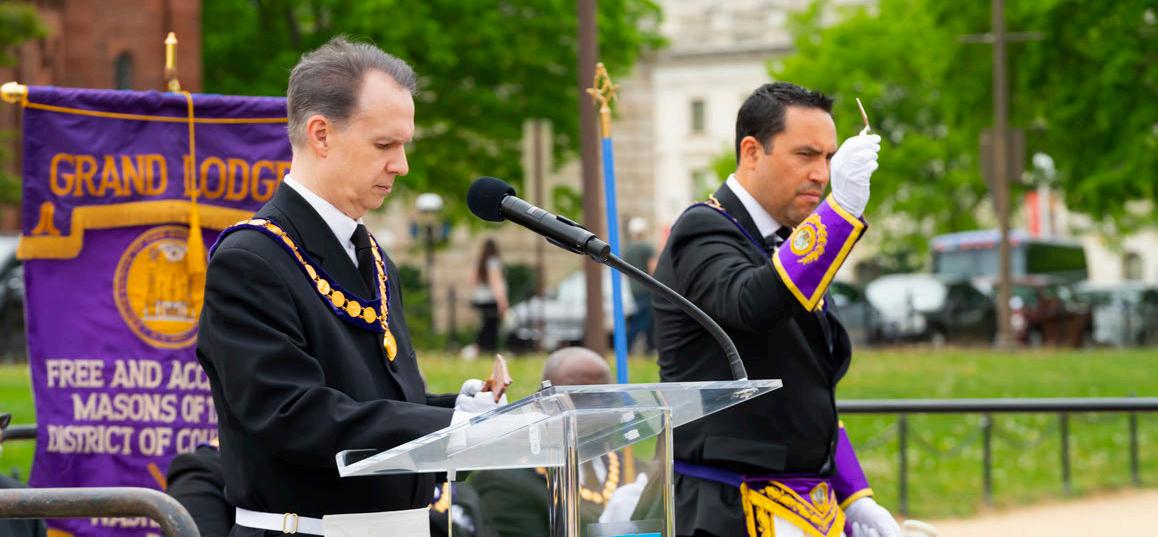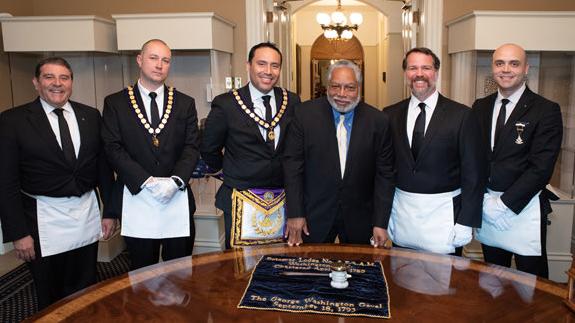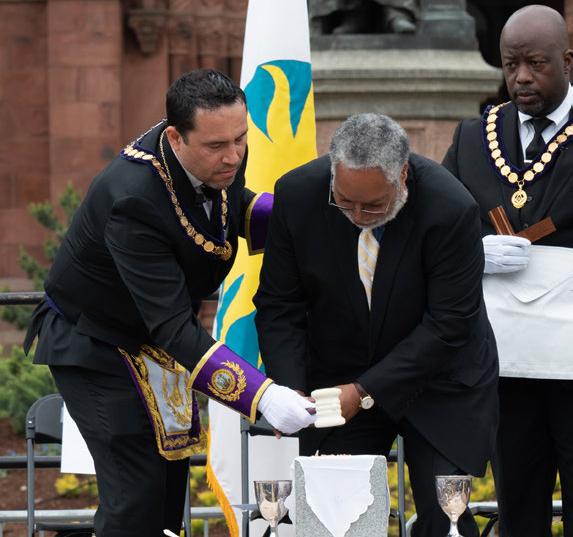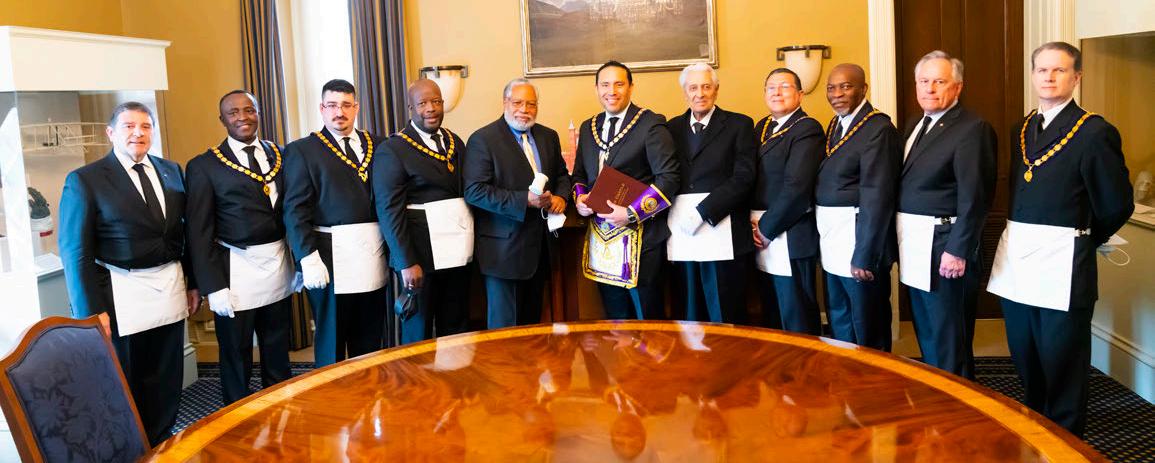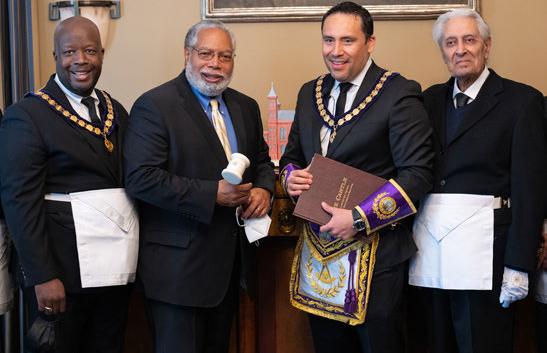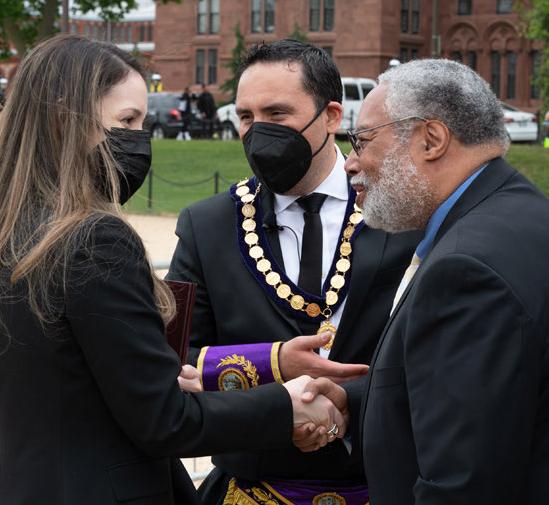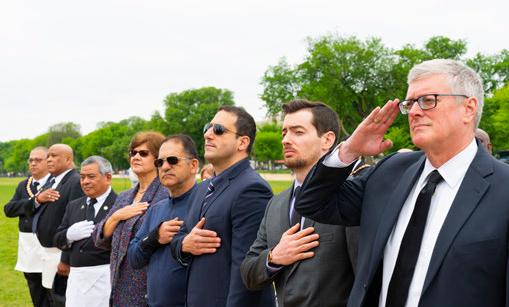
4 minute read
LAYING THE CASTLE CORNERSTONE: A HISTORICAL REENACTMENT
(Remarks as prepared for delivery)
Hello. I’m honored to be here as the 14th Secretary of the Smithsonian. Today we recreate the auspicious day in 1847 when our first Secretary, Joseph Henry, observed the laying of the cornerstone to the Smithsonian Institution Building, known affectionately as the Castle. It’s apt that his statue watches over the proceedings again. Henry began the tradition of excellence that 13 other Secretaries have upheld and expanded to reflect the changing expectations of the American people.
We gather today to remember what role the Castle has played in our community, our city, and our nation. It’s been a space of service for 175 years, occupying a spot on some of the city’s most revered land. And when this medieval revival red sandstone building, this homage to nobility, was constructed, it seemed out of place. But it cemented this place as a site of learning, a site of yet to be considered possibilities.
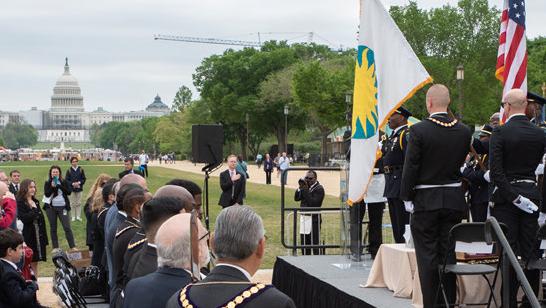
Today, we should also remember that so many buildings in the nation’s capital, like so much of America, were built as the result of conquest, by African Americans enslaved and free. It’s still unclear what role enslaved people played in the construction of the Castle, but it’s clear that Washington, D.C. and the nation would look markedly different today were it not for the efforts of Black laborers.
This day should remind us of that history, too. It’s a history that should be acknowledged so that we can learn from it. Doing so doesn’t take away from the pride we should all feel for the symbol of enlightenment the Castle has become.
We must use this building to remember that the Smithsonian reflects both the wonders and the reality of American life. Not all who built the amazing landmarks that symbolize the nation benefited from the promise of America. So today, 175 years after the cornerstone for the nation’s Smithsonian Institution was laid, we share a commitment to the American people and the citizens of the world. We use this opportunity not just to remember and revel in our past, but as a challenge to create a better shared future and to live up to the promise of what the Smithsonian can be, one that all Americans deserve.
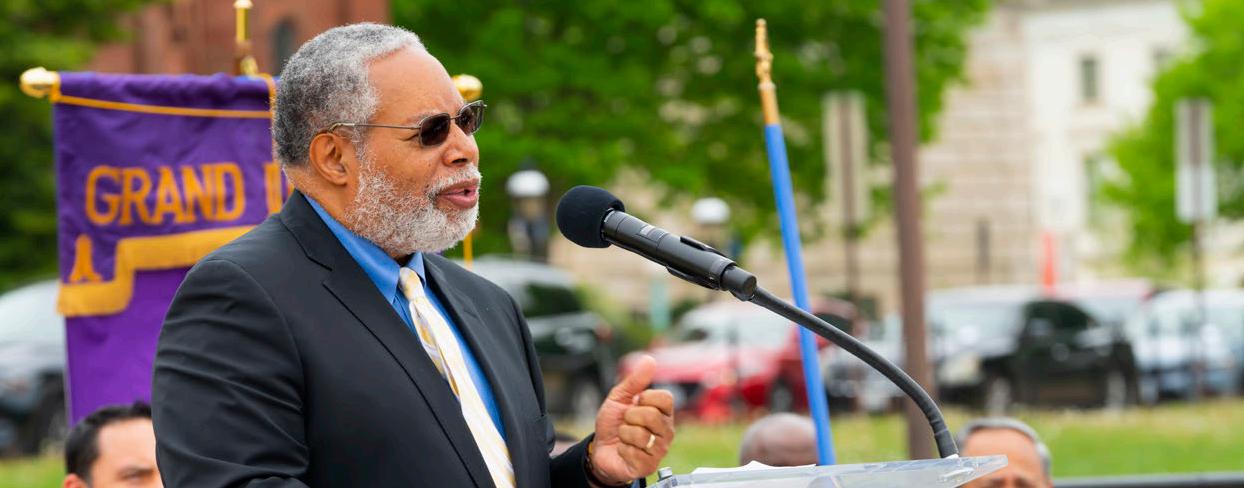
Remarks By The Grand Master
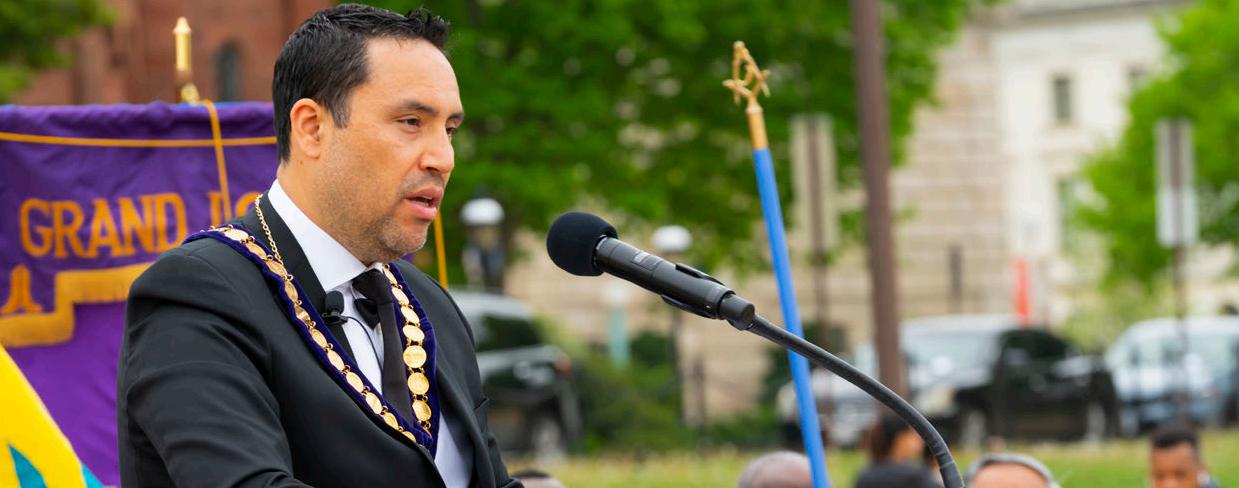
Mr. Secretary, ladies, gentlemen and brethren, be it known unto you that we be lawful Freemasons, true and faithful to the laws of our country, and engaged by solemn obligations to aid in the erection of public buildings by placing in position the foundation-stone, cornerstone, or commemorative stone whenever called upon to do so by those having charge of the same.
These ceremonies which you have witnessed have come down to us from time immemorial, and are in themselves invaluable to us as purely symbolic of that spiritual building which each one of us is engaged in erecting during our natural life; and as in this temporal building, we have proved the stone to be well formed, true and trusty, let each one of us be sure that for his or her spiritual building its foundation stone be likewise well formed, true and trusty.
Mr. Secretary, as Grand Master of Masons who reenacted the laying of the cornerstone of this structure, I now deliver these implements into your hands as a memento of this symbolic, significant, consequential, and inspirational event. (Secretary Buch will approach the podium to take the implements from Grand Master and return to his seat, after which Grand Master continues with his short remarks as follows)
Symbolic, as it entrusts the people who work at this esteemed institution with the charge to promote prosperity, happiness and peace among mankind.
Significant, as it connects through time this important structure to that of the United States Capitol whose cornerstone was laid Masonically in a similar fashion by President and Freemason George Washington on September 18, 1793. The presence here today of the Gavel used by George Washington to conduct that ceremony almost 229 years ago, which was made available to us by the Brethren of Potomac Lodge No. 5, the custodian of this historic artifact, is a testimonial of the historical significance of this event.
Consequential, as it honors The Smithsonian, this incredible institution, willed by our late Brother Freemason James Smithson, and dedicated to the diffusion of knowledge among humans. Freemasonry teaches us that Liberty cannot be truly achieved without enlightened knowledge. Our forefathers, many of whom were Freemasons, gifted us with a Bill of Rights that safeguards Freedom of Speech, Freedom of the Press, Freedom of Religion, Freedom of Assembly, and the Freedom to petition the government for redress of grievances.
But they also gifted us with a system of governance wherein We The People, not It the Government, are at its core; which means that We The People can use those Freedoms to either build or destroy, cause beauty or ugliness, spread the cement of brotherly love or scatter the seeds of hatred. We therefore as citizen builders whose aim is to advance our human condition need to also equip ourselves with the Freedom from Ignorance, Freedom from Extremism, Freedom from Tyranny, Freedom from Hate, and Freedom from Fear. This “Freedom From” can only be realized through the pursuit of enlightened knowledge. Thus, how consequential is The Smithsonian's mission to our country and humanity at large.
Inspirational, as on this National Mall, envisioned by our late Brother Freemasons Pierre L’Enfant and Benjamin Banneker, The Smithsonian stands between the U.S Capitol, a Temple of Liberty and the Sovereignty of the People, and the Lincoln Memorial, a Temple of Democracy. This is to signify that with the aid of Enlightened Knowledge and the blessings of Providence we can exercise our Freedoms wisely to secure a government of We The People, by We The People, and for We The People
What an extraordinary and important mission! Please join me in welcoming the Secretary of the Smithsonian, the Honorable Lonnie Bunch.
